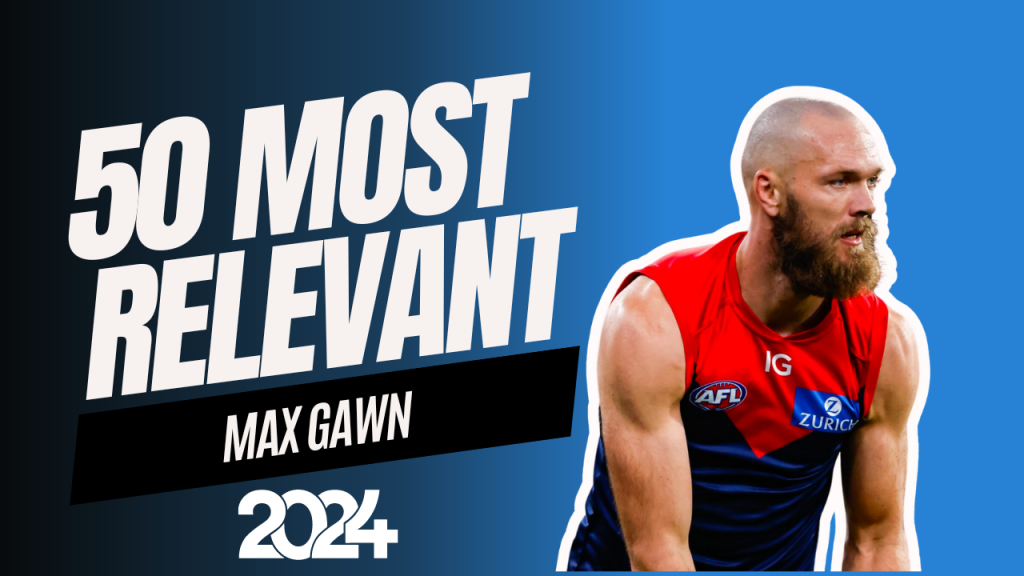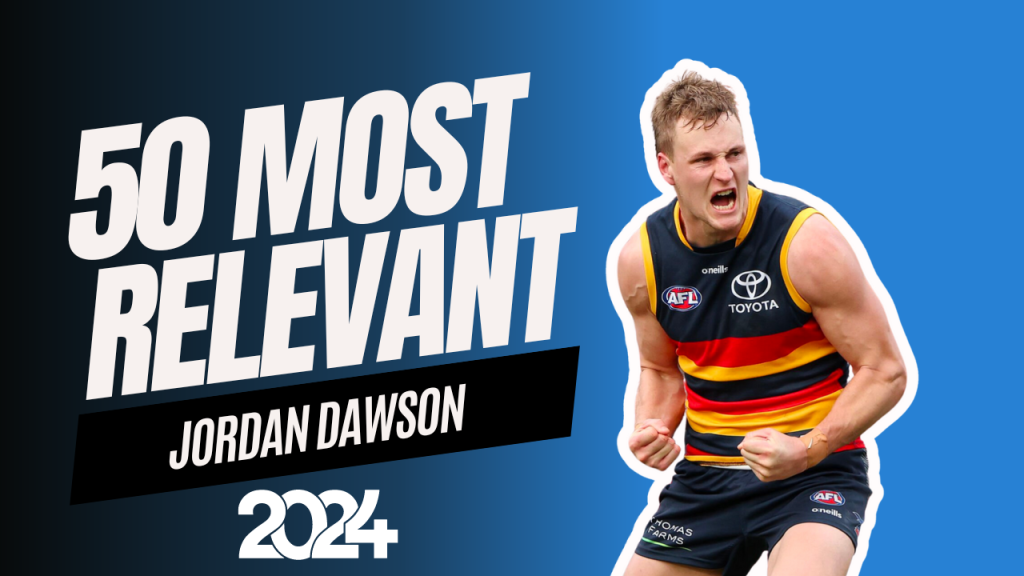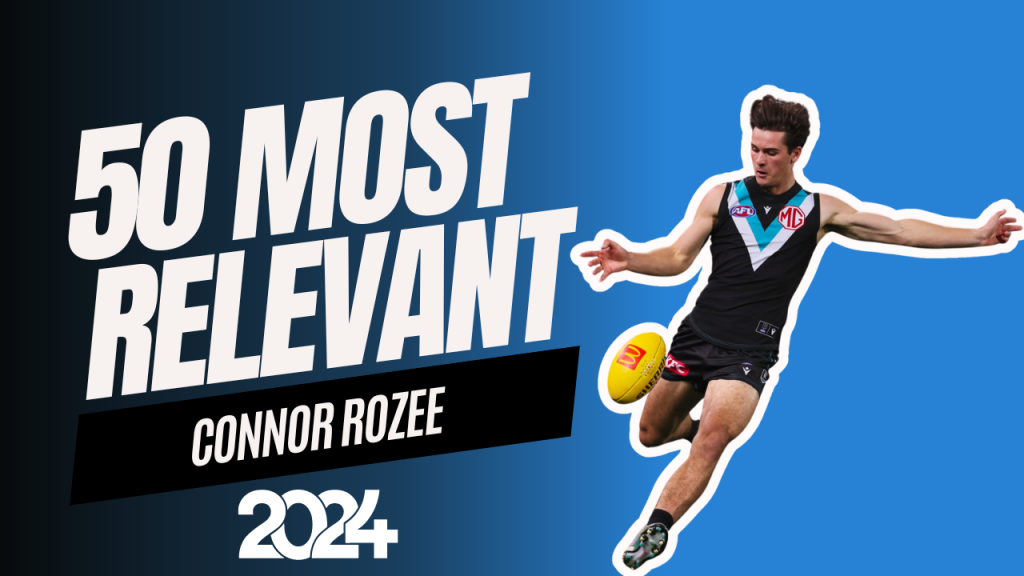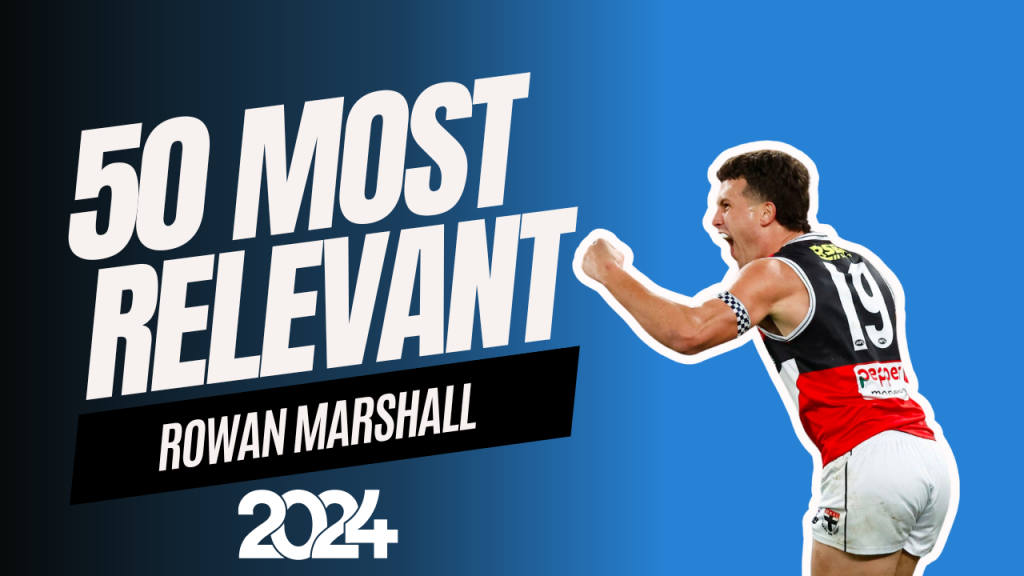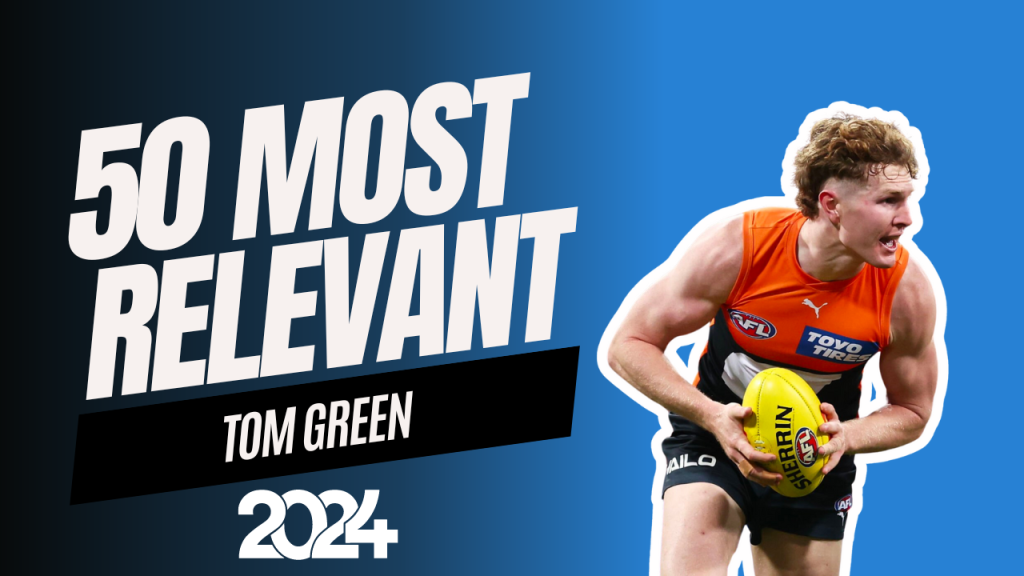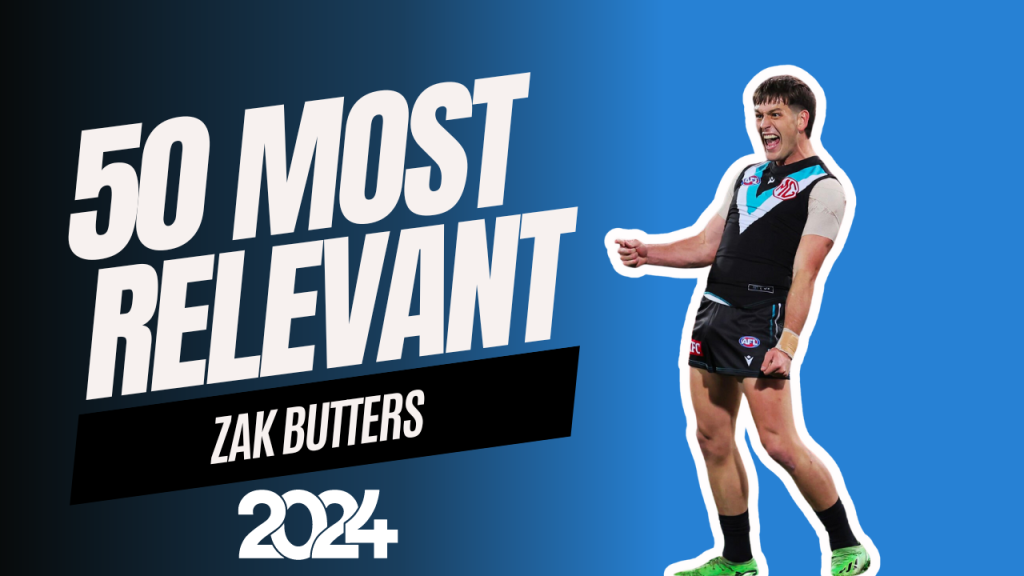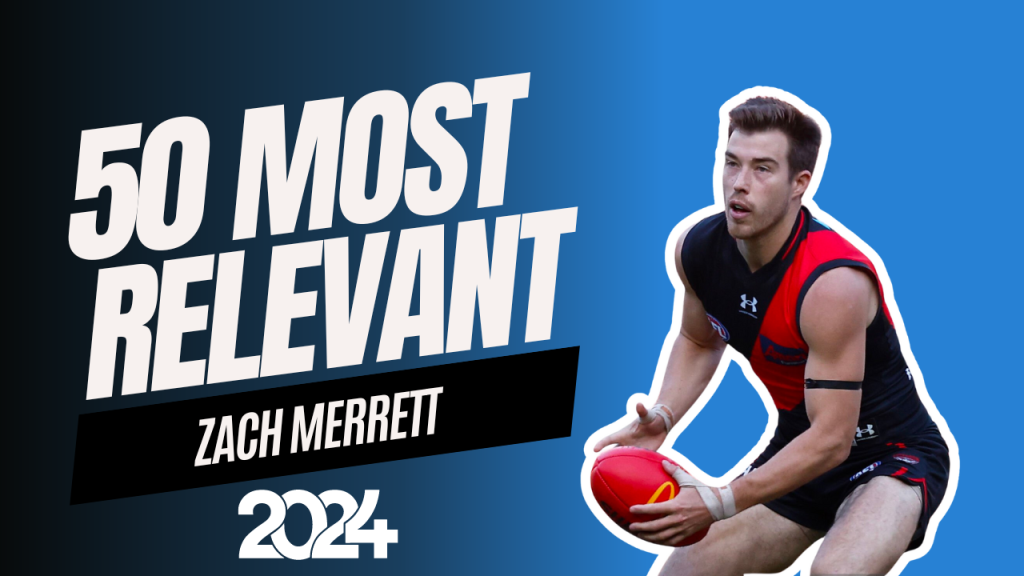WHY IS HE RELEVANT? Max Gawn is an iconic figure in the AFL, embodying the quintessential ruckman with his towering presence, exceptional athleticism, and unmatched ruck craft. Renowned for his ability to dominate hitouts, Gawn’s influence extends far beyond the ruck contests; he’s equally adept at impacting play around the ground
In 2023, Jordan Dawson went from being a handy premium defender to one of the best players in the AFL, let alone in AFL Fantasy and SuperCoach. But with a loss of defensive status and now being available solely as a midfielder, is it the end of his relevance? Or is the Crows skipper just warming up?
For the past 18 months, Connor Rozee has continued to elevate his AFLFantasy & SuperCoach, scoring the premium levels. In 2024, can the new Port Adelaide Captain become part of the fantasy football elite?
Rowan Marshall’s ascent as an AFLFantasy and SuperCoach titan underscores his pivotal role in St Kilda’s lineup, marking him as a sought-after first-round pick in fantasy drafts. This article delves into Marshall’s potential, exploring his proven track record and the strategic value of a top-tier ruckman who can shape team composition.
Tom Green has become a fantasy football powerhouse in just a few short seasons. We look at the GWS Giants midfielder’s standout 2023 season, his exceptional scoring ability and pivotal role in the midfield. Green is positioned to elevate his scoring to new heights in 2024, but does the early bye create chaos for coaches considering? Let’s discuss that in the 50 most relevant.
Zak Butters’ ascent into the elite echelons of AFL midfielders has fantasy coaches buzzing, especially after his standout 2023 season with Port Adelaide that blended hard-nosed play with top-tier skill. We dive into Butters’ fantasy football prospects, unpacking his potential for both SuperCoach and AFLFantasy amid expectations of increased scoring and the strategic nuances of Port Adelaide’s dynamic midfield lineup.
Diving into the AFLFantasy & SuperCoach prowess of Geelong’s Tom Stewart, we analyze his standout performances and consider his role evolution ahead of the 2024 AFL season
Discover why Fremantle Dockers’ Caleb Serong is a must-consider pick for your AFLFantasy & SuperCoach lineups in 2023 as we delve into his scoring potential, growth areas, and strategic value ahead of the season. Learn how Serong’s leadership role, fixture advantages, and resilience against tags can elevate your fantasy football strategy, making him a pivotal selection for achieving bye-round balance and maximizing points.
Exploring Tristan Xerri’s ascent as North Melbourne’s primary ruck option, we delve into his fantasy football potential and strategic value following a promising season and the departure of Todd Goldstein.
Zach Merrett’s blend of consistency and elite performance cements his status as a top fantasy football option, navigating the strategic depths of selecting a midfield maestro amid the early rounds’ quest for scoring diversity.
